
| Home |
| News |
| Blog |
| Films |
| Poetry |
| Drama |
| Music |
| Articles |
| Books |
| Video Clips |
| Links |
| Newsletter |
| Contact |
| Blog Entries April-June 2012 |
28/6/12
Have been looking back on the Religious Education exam papers from
this year's State exams and found only one substantial question related
to the arts - from the Leaving Cert Higher level paper - it was in the
section on "Christianity - Origins and Contemporary Expressions".
Part of the question asked: "b) i. Outline the understanding of Jesus
that can be found today in one example from any of the following: ART,
FILM, MUSIC. ii. Assess the extent to which the understanding of Jesus
outlined in part b)i above is true to the gospel accounts of the life
of Jesus. For full exam papers available click here.
A few months ago I plugged a new website, iCatholic.ie. After a modest start the site really came into its own at the International Eucharistic Congress, broadcasting live from the RDS. Now many of the highlights of the Congress are available for viewing. Included is one of Liam Lawton concerts in the RDS Concert Hall. Watch the concert here - video above - may take half a minute to load.
23/6/12
First
to the bargains - was in the Veritas shop in Middle Abbey St Dublin
yesterday and they have film dramas from the Bible at 7.95 each or 2 for
10 Euro. I picked up "Jesus" featuring Jeremy Sisto in the title role.
I've used clips from that one in class and am loking forward to seeing
the full version. There are video films on a range of characters including
Mary Magdalen, Abraham, Joseph of Nazareth and St Paul. Actors include
Richard Harris.
I have to compliment RTE's Nationwide team for an excellent review of the Congress on Monday of last week. If you wanted a video souvenir of the event you couldn't do much better. Mary Kennedy and Anne Cassin presented a warm retrospective that featured many elements people might have missed in the news coverage. Fr Robert McCabe did well explaining the work of the military chaplaincy, not too widely known up to now I'd say. We got a look at the "Through the Eyes of the Apostles" exhibit in the company of John Waters, a better coverage of the Eucharistic Procession than was on the News, and lots of positive contribution from pilgrims. It will be available for another two weeks on the RTE Player. Click here.
17/6/12
What
a day in Croke Park for the closing ceremonies of the 50th International
Eucharistic Congress. Spectacular and moving at the same time. I was frozen
in the Hogan stand as the evening went on but who cares, the music was
just out of this world. The one-hour concert that preceded the Mass was
a great showcase. I'm not a great fan of "Panis Angelicus" and
I think John McCormack's version has been way over-exposed lately (one
of my son says he's allergic to it), but it got freshened up bigtime today
when sung by Celine Byrne, Fr Marino Nguekam and Jacek Wislocki. Liam
Lawton sang "The Could's Veil" from the centre of the arena
and that was special. Fuaimlaoi, with their conductor and composer Ronan
McDonagh, impressed with their distinctive blend of traditional Irish
and liturgical. The Three Tenors Ireland did well on "You Raise Me
Up" though that one is also overexposed. The Priests excelled on
"King of Kings" while the Monastervan Gospel Choir livened things
up and added a contemporary flavour. I was delighted to see St Mary's
School Choir from the School for the Deaf again (had been absorbed by
their performance at the Emmanuel concerts), though as they were signing
to slow songs their vibrancy didn't come through so strongly.
Needless to say with such talent on board the music for the Mass was exceptional.
Again the Congress theme "Though We Are Many", by Bernard Sexton,
was sung with appropriate gusto, while the Ó Riada music never
looses its freshness - "Ag Críost an Síol" figured
strongly and linked into the Gospel reading about sowing seeds. And what
about that striking Responsorial Psalm so beautifully sung by Karen O'Donovan
of Fuaimlaoi!
16/6/12
Last day at IEC2012 in the RDS so it was time to catch up on a
few things that had been longfingered.
If art can be created with plants the Rosary Garden in the Poor Clares
St Damian's, next door to Simmonscourt fits the bill. That was a most
unusual creation which led into the small chapel for Eucharistic Adoration.
I visited the Army Chaplaincy camp in the Simmonscourt area and that was
quite impressive. There was a liitle tent chapel, and lots of interesting
posters. I think my pupils would love to see some of this. Boys and armies!
Over at the Youth Space I came across a session of what seemed to be Christian
Disco Dancing! The workshop was called "Street Dance - The Move of
Faith". and people were certainly having a ball.
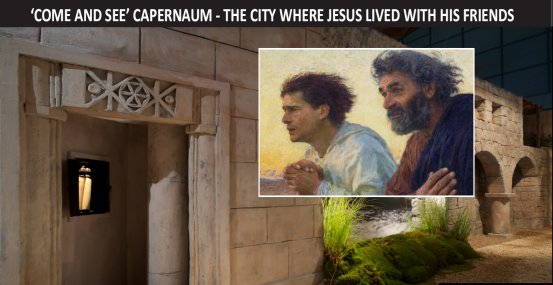 Late
evening I finally got in to see the Exhibition "Through the Eyes
of the Apostles", a recreation of the village of Capurnaum in the
time of Jesus. That was impressive - I especially liked the lakeshore
setting where the projected video of the lake on a huge screen made you
feel like you were there. Hopefully this exhibition will surface again.
Late
evening I finally got in to see the Exhibition "Through the Eyes
of the Apostles", a recreation of the village of Capurnaum in the
time of Jesus. That was impressive - I especially liked the lakeshore
setting where the projected video of the lake on a huge screen made you
feel like you were there. Hopefully this exhibition will surface again.
15/6/12
More rich experiences of music and drama at the International Eucharistic
Congress today. I started the day with my monthly slot on Spirit Radio
- did it in studio this time as I was already in Ballsbridge area. I spoke
about the arts events at the Eucharistic Congress, pretty much a short
version of what I've been writing here.
I got back over to Congress in time for the play Servant at the Supper
a one-woman show by Eleanor Glenn, a retired school principal from
Canada. It was an imaginative idea - the fictional character was the daughter
of the man who owned the Upper Room, scene of the Last Supper. Everything
that followed is seen through her eyes - the Apostles return to the same
Upper Room after the Crucifixion, Jesus appears there after Resurrection,
the dramatic events of Pentecost happen there. This unity of place works
well, and Glenn has a great voice and great command of the stage. The
chalice and bread were central symbols the whole time and she frequently
drew attention to them. The servant is looking back years later, but I
would like her to have captured better some of the puzzlement and angst
as the younger girl tried to make sense of it all. The script is very
close to Scripture, which has its advantages, but more exploration would
have helped - like T.S. Eliot does in Journey of the Magi or Song
For Simeon. Also I thought there was too much of a sudden jump from
Last Supper to Crucifixion, and to the Ascension. One song/chant for the
Resurrection didn't work for me. Glen did well to cope with the fact another
workshop was going on behind the curtain and every word from that talk
could be heard - a real Pro!
There was the usual variety in the main arena at lunchtime. St Ultan's Orchestra from Cherry Orchard was wonderful, and they even had a mini gospel choir within the group. Elation Ministries rocked the crowd from the second stage - they seemed to have their own fan club in the front row. I believe they've been playing a blinder in the Youth Space all week. I loved their light rock version of Our Lady of Knock, though I'd say it wasn't to everyone's liking! They were followed, in striking contrast, by the Brook Singers, a male voice singing group specialising in Welsh hymns. Later the burst into song in the food tent!
In
the evening I went to see Danielle
Rose, a singer-songwriter from USA, at Haddington Road Church. Her
songs were really beautiful, her voice really attractive and her finger
picking guitar matched the songs perfectly. Many of the songs were about
Our Lady, not surprising as the event was organised by Family Rosary International
who promote the work of Fr Patrick Peyton, the famous Irish Rosary Priest.
She engaged the audience with her patter between songs, which was in turn
intense, deeply spiritual and even giddy at times. It was more a prayer
event than a concert - she said "Amen" at the end of every song.
One of my favourite songs was "I'll See You in the Eucharist",
which I've definitely heard before but can't remember where or when. It's
recurring refrain of "do not be afraid" was haunting. Towards
the end she sang acapella, which really highlighted the quality of her
voice, on "Crown of Thorns" and a fine version of "Hail
Holy Queen". A pleasant surprise on the night was the "Rosary
Room" - a small oratory off the main church featuring a multimedia
presentation of the Rosary - with four screens showing meaningful imagery
and meditative music in the background. For more info: www.familyrosary.org
I finished the night over in the Youth Space in the Simmonscourt area of the RDS. I arrived for the end of a Focolare presentation on the life of the young Chiara Luce Badano, beatified in 2010, and patron of the Youth Space, which finished with some lively singing from a group of Focolare singers and musicians. Finally, in music and prayer a Young Carmelite group led a very quiet and dignified service of Night Prayer.
14/6/12
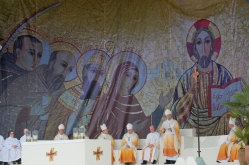 The
most impressive music I heard today at the Eucharistic Congress
was at the main Mass of the day - the Mass was mostly in Irish, and the
music also had a very Irish flavour, with many of Sean Ó Riada's
pieces which never date, along with some fine harp and fiddle music. The
choir was in excellent form and the soloists sang exceptionally well.
During Communion time the Congress hymn, "Though We Are Many",
written by Bernard Sexton, was sung better than I've ever heard it. The
congregation near me joined enthusiastically in the singing, especially
on that distinctive arrangement of "O Sacrament Most Holy" combined
with "I Am the Bread of Life". After the Mass the Vard Sisters
sang a beautiful "Ave Maria" and the Liam Lawton song "Send
Me an Angel".
The
most impressive music I heard today at the Eucharistic Congress
was at the main Mass of the day - the Mass was mostly in Irish, and the
music also had a very Irish flavour, with many of Sean Ó Riada's
pieces which never date, along with some fine harp and fiddle music. The
choir was in excellent form and the soloists sang exceptionally well.
During Communion time the Congress hymn, "Though We Are Many",
written by Bernard Sexton, was sung better than I've ever heard it. The
congregation near me joined enthusiastically in the singing, especially
on that distinctive arrangement of "O Sacrament Most Holy" combined
with "I Am the Bread of Life". After the Mass the Vard Sisters
sang a beautiful "Ave Maria" and the Liam Lawton song "Send
Me an Angel".
Visual art has been prominent at the Congress - there's a striking Icon
behind the main altar (pic above left), and the smaller Icons of the Congress
form part of many of the ceremonies, accompanying the Congress Bell. These
are by iconographers Colette Clarke, Phillip Brennan and Richard Sinclair.
For more information on these click here.
13/6/12
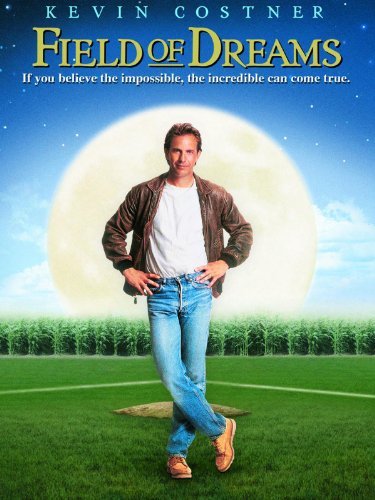 I
think numbers are increasing at the Congress - very busy this morning.
Got there early for workshop on "Poets of the Eucharist" but
it was full! All was not lost as I found space at the workshop on Faith
and Film presented by Fr Peter Hannon SJ. It didn't focus specifically
on religious films but looked at broader human and philosophical concerns.
In particular he spoke of the idea of following your dreams, and the tension
between that and meeting expectations. He used clips from Dead Poets
Society, Field of Dreams and Cinema Paradiso to illustrate
his points. The idea of the dream, he said, was common to both faith and
film. The dream within us always manages to surface even when we ignore
or neglect it, and even when harsh realities seem to smother it. Three
stories were important - our own, those told to us by others (incl. in
film) and the Gospel story. On missionary work in Zambia years ago he
found his RE classes failing to link with the students and after that
began to start with their own story, something real and personal for them,
and then moved into the gospel story. All in all an interesting and thought
provoking workshop, though I would like to have seen more clips, and have
had time for questions.
I
think numbers are increasing at the Congress - very busy this morning.
Got there early for workshop on "Poets of the Eucharist" but
it was full! All was not lost as I found space at the workshop on Faith
and Film presented by Fr Peter Hannon SJ. It didn't focus specifically
on religious films but looked at broader human and philosophical concerns.
In particular he spoke of the idea of following your dreams, and the tension
between that and meeting expectations. He used clips from Dead Poets
Society, Field of Dreams and Cinema Paradiso to illustrate
his points. The idea of the dream, he said, was common to both faith and
film. The dream within us always manages to surface even when we ignore
or neglect it, and even when harsh realities seem to smother it. Three
stories were important - our own, those told to us by others (incl. in
film) and the Gospel story. On missionary work in Zambia years ago he
found his RE classes failing to link with the students and after that
began to start with their own story, something real and personal for them,
and then moved into the gospel story. All in all an interesting and thought
provoking workshop, though I would like to have seen more clips, and have
had time for questions.
Finally had a good look around the exhibition hall today - plenty of resources and ideas for RE teachers! The Ennis Gospel Choir was giving an informal concert in the centre of the hall, and they were certainly drawing a crowd with their lively and familiar songs, like Shackles (by Mary, Mary) and the Beatles' Let It Be. I was very impressed by the artwork of Fintan Tracey - especially the Eucharistic art - check out his stand on the balcony, where you can also find Liam Lawton's stand, and one for Dana's music.
12/6/12
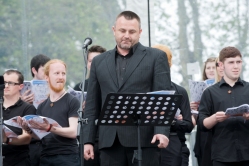 Another
fine day at IEC, though the weather did threaten, and out came
the free ponchos! Lunchtime is a good time to be in Main Arena for music
fans. First group I saw today was Kisi - God's Singing Children, a group
from Austria whose music ministry is extending to other European Countries.
They danced and sang through a lively set of gospel songs. On the other
stage Ian Callanan (pictured left) directed a wonderful choir, who sang
songs about today's Congress theme of family. There was a beautiful song
which would be most suitable for weddings - not sure of the name but the
chorus went "Make of our hearts one heart". To the tune of Loch
Lomond they sang a fine pilgrim song which I think was called "Love
is the Boat for the Journey".
Another
fine day at IEC, though the weather did threaten, and out came
the free ponchos! Lunchtime is a good time to be in Main Arena for music
fans. First group I saw today was Kisi - God's Singing Children, a group
from Austria whose music ministry is extending to other European Countries.
They danced and sang through a lively set of gospel songs. On the other
stage Ian Callanan (pictured left) directed a wonderful choir, who sang
songs about today's Congress theme of family. There was a beautiful song
which would be most suitable for weddings - not sure of the name but the
chorus went "Make of our hearts one heart". To the tune of Loch
Lomond they sang a fine pilgrim song which I think was called "Love
is the Boat for the Journey".
The music for Mass that afternoon saw Fr Liam Lawton directing choirs
from Kildare and Leighlin, Ossory & Ferns and Waterford
& Lismore. It must have been quite a challenge as there was a choir on
each side of the main altar area, but it worked well.
I called over to the Youth Space later in the evening for a concert -
a great idea to have events there going on until late. The Gardiner Street
Gospel Choir was in fine form, accompanied by an effective six piece band,
with lead piano a standout - their styles included foot tappin' gospel,
reggae, and slow soulful songs. Highlight for me was their performance
of the song "Hands" by Texas singer Jewel.
11/6/12
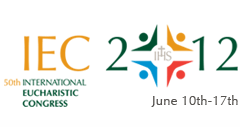 First
day at the International Eucharistic Congress today. Very impressive,
carnival atmosphere, sunshine, good music, meeting friends and acquaintances
around every corner. And it sure is multicultural with so many pilgrims
from abroad, and members of religious orders wearing habits I'd never
seen before, adding to the colour palette.
First
day at the International Eucharistic Congress today. Very impressive,
carnival atmosphere, sunshine, good music, meeting friends and acquaintances
around every corner. And it sure is multicultural with so many pilgrims
from abroad, and members of religious orders wearing habits I'd never
seen before, adding to the colour palette.
I was impressed by the multicultural Discovery Gospel Choir who sang in
the lunchtime warmup in the main arena - vibrant singing, tasty instrumental
backup and colourful outfits.
I attended a talk given by Archbishop Diarmuid Martin in the morning.
He was speaking about the Vatican II document Gaudium et Spes,
the Pastoral Constitution on the Church in the Modern World, and he was
strong on the idea of faith interacting with culture, which is central
to what Faitharts is about. He quoted what Pope Benedict said to him on
a visit to Rome: "Where are the points of contact between the Church
and those areas where the future of Irish culture are being formed?”.
The full speech is well worth reading - click here.
 There
were many events tonight but I opted for a play The Trial in the
RDS Concert Hall (it's on again at 7 pm Tuesday night). It was written
by Glen Gannon, who played the Jesus figure "heysus" (on left
of pic), directed by Frank Allen and musical director was Ken Touhy. I
wasn't sure what is was going to be about, but not surprisingly it was
a passion play, covering the period from Holy Thursday to Easter Sunday,
but in a future setting - 2033, and Troika soldiers are ruling Ireland
with a heavy hand! It was good to see such imagination at work. And it
was a musical, in that songs were interspersed with the drama.
There
were many events tonight but I opted for a play The Trial in the
RDS Concert Hall (it's on again at 7 pm Tuesday night). It was written
by Glen Gannon, who played the Jesus figure "heysus" (on left
of pic), directed by Frank Allen and musical director was Ken Touhy. I
wasn't sure what is was going to be about, but not surprisingly it was
a passion play, covering the period from Holy Thursday to Easter Sunday,
but in a future setting - 2033, and Troika soldiers are ruling Ireland
with a heavy hand! It was good to see such imagination at work. And it
was a musical, in that songs were interspersed with the drama.
The songs were good and the singing by the female leads was excellent.
However there were problems. To start with the play was way too long -
including the break it lasted two and three quarter hours. Some of the
songs could be trimmed, and both the Garden of Gethsemane and Trial scenes
needed to be much shorter. Given the title I think it would have been
best to focus entirely on the trial scene - the play would have had a
tighter focus, and lots of issues around justice could have been teased
out. There was a difficulty with tone - for example the first part was
for the most part very serious. Then the second part opened with the trial
scene and at times it descended into pantomime, with references to Nama,
brown envelopes and a "whip around", and then Pilate and his
assistant acting like a comedy team - jarring. Later there were a few
false finishes, like the ensemble singing of a melodic Our Father.
I thought there were too many songs, and most sounded too alike. I can
remember only one uptempo number as the crowd argued over whether "heysus"
or Barabbas should be released, and that scene worked well.
I thought the Jesus/heysus (Why not Jésus?) parallel didn't work
as well as it should have, and sometimes the mixture of modern and Biblical
didn't gel. Considering it was a Eucharistic Congress I thought the modern
equivalent of the words of consecration were weak - something along the
lines of this wine is the colour of blood and this bread is the colour
of flesh.
I don't like to be negative about something that was sincere and well
produced, but I do think the play needs a considerable amount of revision.
6/6/12
It pushes a few agendas and takes a few digs at religion (or at least
at its flawed practitioners) but I find it hard to take offence at The
Simpsons. Two of the "religious" episodes turned up last week on the
innumerable reruns on RTE 2 and Channel 4. In "I'm Going to Praiseland"
(Channel 4, Wednesday of last week) the indefatigable Ned Flanders decides
to set up a Christian Theme Park (a dig I'd say at those Evangelicals
who try to Christianise popular culture). A gospel singer laments that
her band had changed from gospel to pop - they just changed "Jesus" to
"baby" in their songs. But, not surprisingly, the venture fails. At one
stage people praying at the statue of the late Maude Flanders get visions
of Heaven - we could relate to that I suppose we all have our own visualisations.
The comic store sci-fi man imagines Heaven as an episode of Star Trek,
Disco Stu meets Frank Sinatra at a heavenly disco (after St Peter helps
him skip the queue), but for Sinatra that's hell! Entertaining though
the visions are it turns out they are only hallucinations brought about
by a gas leak. Oh well.
In "Bart Sells His Soul" (RTE 2 last Thursday), cynical Bart is hard up
for cash and sells his soul to friend Millhouse for five dollars. Later
he offers to sell his conscience and even his sense of decency. But gradually
the loss of soul has a detrimental effect - automatic doors won't open
for him, his breath leaves no fog on the shop's ice cream freezer, he
looses his sense of humour. A dream sequence (always worth a try if you
want to try something wacky) sees all his friends playing happily with
their souls, leaving him miserable while his soul rows a boat for Millhouse.
Eventually Bart is desperate to get his soul back and when he does, thanks
to the love of his sister he gobbles down the soul-selling contract. A
religious believer could have no complaint about such a ringing endorsement
of the existence of the soul, though people looking for orthodoxy might
quail at Lisa's suggestion that perhaps people are not born with a soul
but have to earn it. But then, she is only 8!
28/5/12
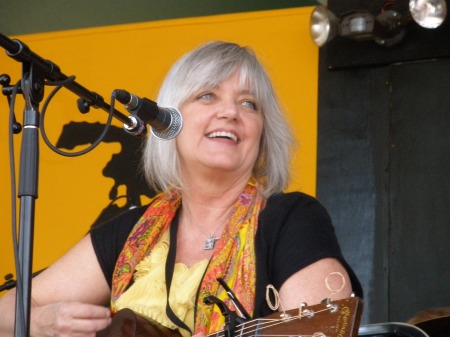 On
Saturday night last I went to a gig by Kimmie Rhodes a singer-songwriter
from Texas. What a treat! Apart from the folk-country type songs she sang
a few gospel numbers - in particular "Bells of Joy" and "God's
Acre". Well worth checking out. She has regularly included gospel/spiritual
songs on her albums. What I wasn't expecting however was her son Gabriel
who accompanied her on guitar mainly - it was like the instrument was
part of him - blistering lead ascoustic, and sensitive accompaniment as
well as subtle backing vocals, not to mention percussion and melodica
- first time I ever saw that instrument used in a Roots music setting.
It was my first time in the Seamus
Ennis Cultural Centre in the Naul in North County Dublin and I have
to say it's an excellent venue - you can get a fine meal in the coffee
shop and head into the gig when you're finished. I'll be back!
On
Saturday night last I went to a gig by Kimmie Rhodes a singer-songwriter
from Texas. What a treat! Apart from the folk-country type songs she sang
a few gospel numbers - in particular "Bells of Joy" and "God's
Acre". Well worth checking out. She has regularly included gospel/spiritual
songs on her albums. What I wasn't expecting however was her son Gabriel
who accompanied her on guitar mainly - it was like the instrument was
part of him - blistering lead ascoustic, and sensitive accompaniment as
well as subtle backing vocals, not to mention percussion and melodica
- first time I ever saw that instrument used in a Roots music setting.
It was my first time in the Seamus
Ennis Cultural Centre in the Naul in North County Dublin and I have
to say it's an excellent venue - you can get a fine meal in the coffee
shop and head into the gig when you're finished. I'll be back!
25/5/12
In the last week, I've been doing some
end-of-term prayer services on the theme of thanksgiving/gratitude.
I searched for some suitable songs to accompany the various thanksgiving
prayers, and came up with the following (I'd love to hear more suggestions)
- "In Gratitude I Sing", by Sarah McQuaid from her recent album
The Plum Tree and the Rose (see entry for 27/4/12 below to listen
to this song);"Give Thanks to the Lord (Psalm 107)" by John
Michael Talbot, from Songs for Worship Vols 1 and II; "Thank
You My Lord" by Beth Nielsen Chapman from her album Prism; "Thanksgiving
Song" by Mary Chapin Carpenter from her album Twelve
Songs of Christmas; and "Give Thanks All Ye People" by The
Hutchisons from their album Songs.
Last night I got to experience the wonderful music of the Notre Dame
Folk Choir, currently on tour in Ireland (see News
page). The event was a concert in Gorey, Co. Wexford - I realised last
night for the first time that the venue, St Michael's Church in Gorey,
was designed by the famous architect Pugin. The acoustics were excellent
as the choir worked its way through a thoroughly entertaining and inspiring
set of songs covering the liturgical year and more. Many of the songs
were written, and conducted on the night, by choir director Stever Warner,
who also managed to play guitar accompaniment. He was aided by some very
talented musicians on violin, flute, piccolo (superb playing) percussion
and organ. And what a variety of styles - Latin American, just plain Latin,
Celtic and traditional. Warner's The Lord's Prayer was one of the
best I've heard; "Bless the Corners of this House" was a touching
thank you to the families hosting the choir; there was a fine version
of St Patrick's breastplate, an African American spiritual "Cross
Cry", and a most beatiful setiing of Newman's Lead Kindly Light.
I bought their CD "From Gethsemane to Galway - Live in Concert"
and will post a review soon.
9/5/12
I've been enjoying doing the section on wonder and mystery
at Junior Cycle. It's challenging to do this with 2nd year students, but
I find arts resources helpful - for the first time I got to use a clip
from The Way, the film starring Martin Sheen as a father doing
the Camino de Satiago pilgrimage for his deceased son, played by Emilio
Estevez, Sheen's real life son and the director of the film. Overall the
film is problematic for school use because of the casual use of soft drugs,
but there are some great set pieces. For these classes I used the scene
where the pilgrims finally arrive at the Cathedral - it's a wonderful
and moving scene. I alsp played the song "What a Wonderful World".
I used the version by Eva Cassidy from her Wonderful World album
(also on the DVD Eva Cassidy Sings - see clip on left),
though there's always the definitive version by Louis Armstrong, while
Anne Murray has a decent verson on her album of inspirational songs What
a Wonderful World, and I like the version by L'Angelus on their album
Live Cuts.
27/4/12
Last night I hosted a concert in Arklow with Sarah McQuaid. And
what an impressive singer-songwriter! Some of her material has spiritual
resonance - two I like in particular: a lovely song of thankfulness, "In
Gratitude I Sing", and a touching reflection on those who have gone
before us "In Derby Cathedral". Listen to them here below. Both
songs are from her new album The Plum Tree and the Rose.
25/4/12
Last Sunday night Would You Believe (RTE 1) ended its current season
with the appealing story of TeenspiriT, an initiative to bring
young people closer to their Catholic faith through music. A major success
in Kerry for the last few years, the organisers now seek to bring the
spirit to Dublin. The programme followed their enthusiastic efforts to
get ready for this Sunday night's live show in the Olympia. The Kerry
team were finding it hard to impact with the faith message, but they were
certainly generating an infectious enthusiasm for the music, an experience
they hope will bear fruit in the future. The programme can be seen here
on the RTE Player until Sunday 13th May. Read more about TeenspiriT here.
In the last few days I've been discussing prayer with junior classes. As part of it I decided to do a little prayer in the classroom - just lighting a candle, doing some prayer readings and playing some music. One song I found useful was "Where Do I Go?" by Ashley Cleveland and Gary Chapman, from that great album Songs From the Loft (play it on left) . This is a catchy song that's actually about prayer and fitted in nicely with what we had been doing in class. Some of the students were actually joining in. I think it would also make a great song for a school choir or folk group.
18/4/12
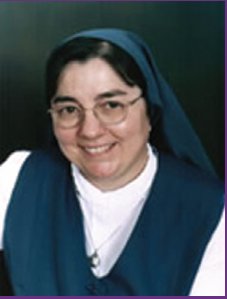 Last
Sunday night I was delighted to hear a talk by Sr Rose Pacatte
from USA. in the Blessed Sacrament Chapel Hall on Bachelor's Walk in Dublin.
Sr Rose has written several books on film and faith, and is a prolific
blogger on film and other media matters. Check out Sr
Rose Pacatte's Movie Blog for plenty of information and ideas. Also
check her more general site here.
Sr Rose advised "deep viewing" of films, and at home in the
States practised what she called "Cinema Divina" with small
groups - using the movies for spiritual insight and linking them to Scripture.
Last
Sunday night I was delighted to hear a talk by Sr Rose Pacatte
from USA. in the Blessed Sacrament Chapel Hall on Bachelor's Walk in Dublin.
Sr Rose has written several books on film and faith, and is a prolific
blogger on film and other media matters. Check out Sr
Rose Pacatte's Movie Blog for plenty of information and ideas. Also
check her more general site here.
Sr Rose advised "deep viewing" of films, and at home in the
States practised what she called "Cinema Divina" with small
groups - using the movies for spiritual insight and linking them to Scripture.
I was delighted on Moday to give a workshop on Film and Music in R.E. at the Annual Conference of the Post Primary Diocesan Advisors in All Hallows, Drumcondra, Dublin. I showed clips from many of the films mentioned on this website, on the blog and film pages (incl Of Gods and Men, Sophie Scholl, Nacho Libre, The Way, Amazing Grace and the confession scene from Gran Torino - my first chance to give this an outing!). I also suggested various ways of accessing useful film clips (e.g. through Wingclips) and how to make one's own clips using the recording function of VLC Media Player. On the music front I played some clips from music DVDs and CDs and recommended the albums I find most useful in RE - e.g. Songs From the Loft and Coram Deo (Various Artists), Signatures by John Michael Talbot, Another World by Liam Lawton. I also used, for the first time, Mirrorscript teleprompter software - (Download from here). This is great for scrolling song lyrics - basically you load a plain text file (e.g. from Notepad) into it and scroll it at whatever speed you choose. To illustrate this I had great fun playing my ukulele and leading the assembled Advisors in a rendition of Kumbya!
11/4/12
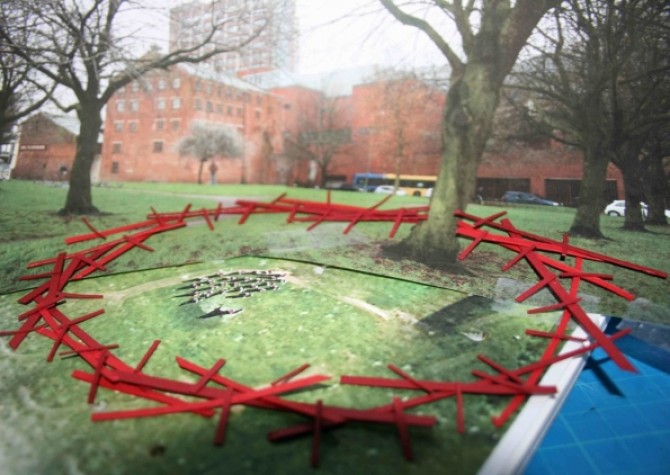 One
of my favourites programmes over Easter was the Preston Passion
(BBC 1 Good Friday) - a live pageant from the streets of Preston in Northern
England. It was notable for the way the Crown of Thorns motif and images
suggesting the Crucifixion were interwoven with the action, which included
three pre-recorded dramas linking the Easter story with the experience
of Preston itself. An aerial view showed the Crown of Thorns suggested
by strategically placed red ribbons and flags, and I noticed the same
motif on the choir members.
One
of my favourites programmes over Easter was the Preston Passion
(BBC 1 Good Friday) - a live pageant from the streets of Preston in Northern
England. It was notable for the way the Crown of Thorns motif and images
suggesting the Crucifixion were interwoven with the action, which included
three pre-recorded dramas linking the Easter story with the experience
of Preston itself. An aerial view showed the Crown of Thorns suggested
by strategically placed red ribbons and flags, and I noticed the same
motif on the choir members.
One of the dramas linked the story of Jesus to that of a social reformer
from Preston who fell foul of the political and religious authorities
of the time - the town's Mayor filled in nicely for Pilate, right down
to the washing of hands; another took up the theme of Mary's sense of
loss at the death of Jesus to tell a touching story about Preston mothers
dreading the news of the death of their sons in the trenches of World
War 1; the third was a clever reworking of the Stations of the Cross (the
Station numbers are subtly embedded in the visuals) as a young girl with
an alcoholic mother made sacrifices for others and journeyed through her
own Via Dolorosa. All in all it was an imaginative reflection on the Good
Friday story, faithful to the original story, but finding much resonance
for today. I can see myself using clips from this programme in RE class
- e.g. looking at religious drama as an issue in itself, looking at the
Easter story in general, looking at how that story still has something
to say to us today. The short dramas are the perfect length for class
work, though the story of the young girl might be painful for some students
who might be in similar situations. There are several clips from the programme
here.
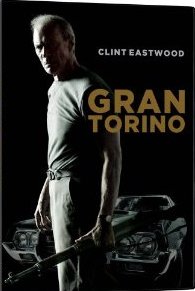 Last
night I finally got to see the film Gran Torino, where Clint Eastwood
plays an irascible old racist in conflict with local immigrants. There's
quite a bit of foul and racist language so I can't see myself using it
in school, but there's a interesting young priest in the story. He promised
the Eastwood character's wife who has just died that will keep an eye
on Walt and try to get him to Confession. Needless to say Grumpy old Walt
resists. The priest is young, and perhaps naieve (Walt didn't have much
time for his funeral oration) but he does persist and both of them learn
a lot about life and death. The scenes between them are quite entertaining
and thought provoking. Ultimately there's a touching and funny Confession
scene - another worthy addition to my collection of Confession scenes!
Last
night I finally got to see the film Gran Torino, where Clint Eastwood
plays an irascible old racist in conflict with local immigrants. There's
quite a bit of foul and racist language so I can't see myself using it
in school, but there's a interesting young priest in the story. He promised
the Eastwood character's wife who has just died that will keep an eye
on Walt and try to get him to Confession. Needless to say Grumpy old Walt
resists. The priest is young, and perhaps naieve (Walt didn't have much
time for his funeral oration) but he does persist and both of them learn
a lot about life and death. The scenes between them are quite entertaining
and thought provoking. Ultimately there's a touching and funny Confession
scene - another worthy addition to my collection of Confession scenes!
2/4/12
How sweet is to be on holidays! To finish up last term I gave some short
tests to the junior classes. As we had been doing "Images
of God" I used the Powerpoint (still available on request) as part
of the test - showing five images on scren and asking students to write
brief coments on each - it worked well. In this age of differentiation
I think it's important to give students something visual to work on for
each text. I also get them to draw in each test - again it caters for
the less academic, and makes for some very intersting images to assess.
This time I got students in 2nd Year to draw any scene from Last Supper
to Resurrection - the Last Supper was very popular, though I got some
lovely illustrations of the Resurrection. Might get the students' permission
to include them here after Easter. First Years had to do a poster/illustration
encouraging or showing the value of religious music as an element of worship.
I haven't marked them yet.